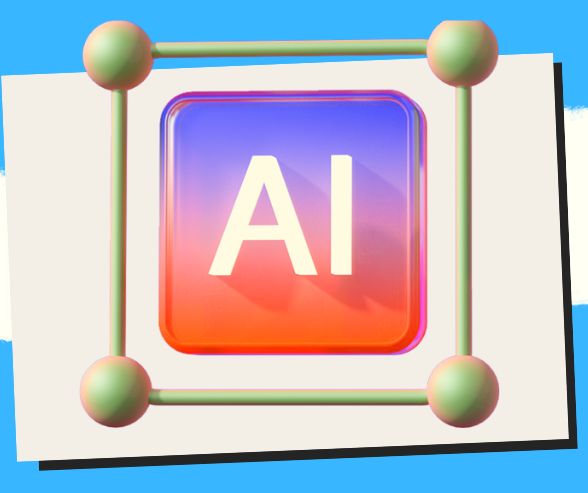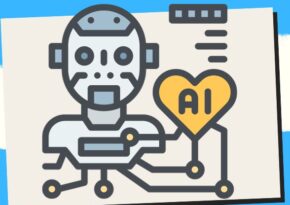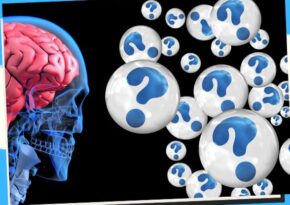
Unleash the Power of NLP: Revolutionize Your Language Skills! 
Explore the fascinating world of Natural Language Processing (NLP) and language models, and discover how they can supercharge your communication skills. Get started today!
Unlocking the Power of Natural Language Processing (NLP) and Language Models 
In an increasingly digitized world where information is generated at an unprecedented pace, understanding, analyzing, and interacting with human language has become paramount. Natural Language Processing (NLP) and language models have emerged as groundbreaking technologies that reshape industries, enable efficient communication, and revolutionize how we interact with computers.
The Language of Tomorrow: NLP Unveiled 
Imagine a world where machines understand the words you speak or write and the subtle nuances, emotions, and context behind them. NLP, a branch of artificial intelligence (AI), is making this vision a reality. NLP involves the development of algorithms and models that enable computers to understand, interpret, and generate human language. It’s the science that empowers chatbots to provide customer support, allows search engines to deliver relevant results, and even enables your smartphone to understand your voice commands.
How NLP Works 
At the core of NLP is the idea that language can be broken down into smaller units, such as words, phrases, and sentences, and then analyzed using mathematical and statistical techniques. Here’s a simplified glimpse into how it works:
- Tokenization begins with tokenization, where text is split into individual words or tokens. For example, the sentence “I love natural language processing” would be tokenized into [“I”, “love”, “natural”, “language”, “processing”].
- Text Analysis: Once tokenized, various linguistic attributes like part-of-speech (POS) tagging, named entity recognition (NER), and sentiment analysis can be applied to understand the structure and meaning of the text.
- Word Embeddings: NLP models use word embeddings like Word2Vec or GloVe to represent words as vectors in a multi-dimensional space. These embeddings capture semantic relationships between words, allowing models to understand context better.
- Machine Learning: Machine learning algorithms, such as neural networks, are then applied to these word embeddings to train models for specific NLP tasks. For instance, recurrent neural networks (RNNs) and transformers are commonly used architectures.
- Contextual Understanding: Transformers, which gained popularity with models like BERT (Bidirectional Encoder Representations from Transformers), excel in capturing contextual information by considering the entire sentence or paragraph, not just individual words.
- Application: The trained NLP models are then used for various applications like language translation, sentiment analysis, chatbots, and more.
The Evolution of Language Models 
Language models are the cornerstone of NLP, acting as the brains behind the technology. These models have evolved significantly, leading to remarkable advancements in language understanding and generation. Let’s take a journey through their evolution:
Rule-Based Systems 
In the early days of NLP, rule-based systems were the norm. These systems relied on predefined grammatical rules and dictionaries to process language. While they could handle simple tasks, they could not grasp complex language patterns and context.
Statistical Models 
The next wave of NLP brought statistical models into play. These models used statistical techniques to process and analyze language, making them more adaptable to different language patterns. However, they still struggled with capturing the intricacies of human language.
Deep Learning and Neural Networks 
The real breakthrough came with the advent of deep learning and neural networks. Recurrent Neural Networks (RNNs) and Convolutional Neural Networks (CNNs) were used to tackle NLP tasks, but they had limitations, particularly in understanding long-range dependencies in text.
Transformers and BERT 
In 2017, the introduction of the transformer architecture transformed the NLP landscape. With their attention mechanisms, transformers allowed models to consider all words in a sentence simultaneously, capturing complex relationships between words. The release of BERT in 2018 marked a pivotal moment, as it demonstrated the power of pre-trained models in NLP.
GPT-3: The Language Model Titan 
Standing tall among these models is GPT-3 (Generative Pre-trained Transformer 3), developed by OpenAI. With a staggering 175 billion parameters, GPT-3 has taken language modeling to unprecedented levels. It can generate coherent human-like text, answer questions, translate languages, and write code snippets. Its versatility and scale have made it a game-changer in various domains, from content generation to healthcare.
Real-World Applications of NLP and Language Models 
The impact of NLP and language models extends far beyond mere academic curiosity. These technologies are actively shaping our world and influencing countless industries. Here’s a glimpse of their real-world applications:
1. Healthcare 

NLP is revolutionizing healthcare by assisting in medical record analysis, clinical decision support, and predicting patient outcomes. Language models can parse vast medical literature, helping researchers stay up-to-date with the latest advancements.
2. Customer Service 

Chatbots powered by NLP are becoming many companies’ first line of customer support. They can understand and respond to customer inquiries, provide troubleshooting assistance, and even process transactions.
3. Content Creation 

Content creators leverage language models to generate articles, blogs, and marketing copy. These models can save time and provide inspiration, but they also raise content authenticity concerns.
4. Language Translation 


NLP plays a critical role in breaking down language barriers. Translation services like Google Translate use NLP to provide real-time translation between dozens of languages, making global communication seamless.
5. Social Media Monitoring 

Brands use NLP to analyze social media sentiment and gather insights into customer opinions. This information helps companies refine their marketing strategies and improve customer engagement.
6. Autonomous Vehicles 

NLP is not limited to text. It’s also used in voice-activated navigation systems in vehicles. By understanding spoken commands, these systems enhance the driving experience and improve safety.
7. Legal and Compliance 

Law firms and regulatory bodies employ NLP to sift through vast legal documents. It helps identify relevant information, streamline due diligence, and ensure compliance with legal requirements.
The Ethical Landscape of NLP and Language Models 

While NLP and language models offer remarkable opportunities, they also raise important ethical concerns:
1. Bias and Fairness 

Language models often inherit biases from the data they are trained on. Addressing bias and ensuring fairness is a critical challenge in NLP to prevent discrimination and misinformation.
2. Privacy and Security 

The power to understand and generate text also raises concerns about privacy and data security. Protecting sensitive information and guarding against malicious uses is paramount.
3. Displacement of Jobs 

Automation driven by NLP can displace jobs in certain industries. Preparing the workforce for these changes and finding ways to create new opportunities is essential.
The Road Ahead: NLP and Language Models in the Future 
️
As NLP and language models continue to evolve, their future holds immense promise:
1. Multilingual Capabilities 

Expect to see even more proficient multilingual models that can break down language barriers, foster global communication, and make information more accessible.
2. Enhanced Human-AI Collaboration 

NLP will be pivotal in bridging the gap between humans and AI. Improved human-AI interaction will lead to more intuitive interfaces and experiences.
3. Ethical Advancements 

Ethical considerations will shape the development of NLP, leading to more transparent, fair, and responsible AI systems.
4. Customization and Personalization 

Language models will become more customizable, allowing individuals and businesses to tailor them for specific tasks and preferences.
5. Augmented Creativity 

Artists, writers, and creatives will use NLP-powered tools to augment their work, generating ideas, assisting in content creation, and collaborating with AI.
In conclusion, Natural Language Processing and language models are the keys to unlocking the language of tomorrow. Their journey from rule-based systems to the mighty GPT-3 has been nothing short of extraordinary. As we navigate the ethical challenges and harness their power, these technologies will continue to reshape industries, enrich communication, and pave the way for a brighter future where human-AI collaboration knows no bounds.
Insights
- What is NLP? Neuro-Linguistic Programming (NLP) combines language, psychology, and behavioral patterns to optimize communication and personal growth.
- Key Benefits: NLP enhances clarity, fluency, and confidence in communication, making it a powerful tool for professionals, learners, and educators.
- Revolutionizing Learning: NLP helps break language barriers and accelerate learning through practical, actionable techniques.
- Wide Applications: From personal development to business, NLP is a versatile tool for improving relationships, negotiations, and leadership skills.
- Practical Impact: NLP techniques provide a systematic approach to understanding and improving how language affects thought and behavior.
Conclusion
Neuro-Linguistic Programming (NLP) is a transformative tool that empowers individuals to improve language skills, optimize communication, and enhance personal development. By understanding the connection between language and thought, NLP offers strategies to boost confidence, fluency, and adaptability in various aspects of life. Whether you’re a student, professional, or lifelong learner, harnessing the power of NLP can revolutionize your communication and open doors to new opportunities.
Key Phrases
- Neuro-Linguistic Programming (NLP)
- mastering communication skills
- language learning revolution
- NLP techniques for success
- effective communication tools
- personal growth with NLP
- improving language fluency
- NLP for professionals
- optimizing learning with NLP
- revolutionizing language skills
Best Hashtags
- #UnleashWithNLP
- #MasterLanguageSkills
- #NLPForSuccess
- #LanguageRevolution
- #NeuroLinguisticProgramming
- #CommunicationExcellence
- #LearnWithNLP
- #FluencyWithNLP
- #EmpowerYourLanguage
- #NLPJourney
Save/Share this story with QR CODE
Disclaimer
This article is for informational purposes only and does not constitute endorsement of any specific technologies or methodologies and financial advice or endorsement of any specific products or services.
 Need to get in touch?
Need to get in touch?

We appreciate your reading. 
1.) 

Your DONATION will be used to fund and maintain NEXTGENDAY.com
Subscribers in the Philippines can make donations to mobile number 0917 906 3081, thru GCash.
3.) 
4.) 
AFFILIATE PARTNERS

World Class Nutritional Supplements - Buy Highest Quality Products, Purest Most Healthy Ingredients, Direct to your Door! Up to 90% OFF.
Join LiveGood Today - A company created to satisfy the world's most demanding leaders and entrepreneurs, with the best compensation plan today.










